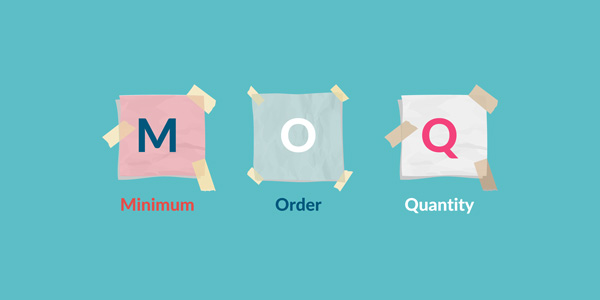How to Reduce Manufacturing Costs to Maximize Margins
- Date:
- Author: SVI Content Team
- Share:
Manufacturing costs can affect your product pricing and profit margins, and competitiveness in the global supply chain. These costs encompass a wide array of factors, such as raw materials, labor, overhead, and logistics. Having the ability to effectively manage and reduce manufacturing costs can help you cut expenses while keeping your supply chain strong and reliable.
The challenge is that costs come from many directions: supplier prices, factory efficiency, shipping fees, tariffs, and even product design. If you don’t know how to reduce manufacturing cost, this guide will provide proven strategies that help importers lower costs without sacrificing product quality.
Without further delay, let’s explore the methods.
Part 1. Brief Overview of Manufacturing Costs
What Manufacturing Costs Include
Manufacturing costs are the total expenses incurred by an organization to manufacture a product from raw materials to finished items. The costs are grouped into 3 main categories:
- Direct materials – the raw inputs used to make the product.
- Direct labor – wages and benefits for workers directly involved in production.
- Manufacturing overhead – indirect costs such as factory utilities, equipment maintenance, and quality control.
Why Reducing Manufacturing Costs Matters
By lowering manufacturing costs, companies can:
- Increase profit margins and financial performance.
- Enhance competitiveness by offering competitive pricing.
- Improve cash flow to invest in initiatives that drive innovation and growth.
- More resilience against market fluctuations and economic challenges.
Part 2. How to Reduce Labor Costs in Manufacturing – 4 Strategies
Direct labor costs refer to the expenses that are paid to the worker directly involved in the production. Labor is often one of the largest cost drivers in manufacturing. What measures can you take? Here are the effective ways to cut labor expenses.
1. Integrate Automation and Technology
Automated production is a preferred choice for handling high-volume production tasks because it increases productivity and effectively decreases labor costs.
Automation streamlines repetitive and manual tasks. It mitigates the risk of errors and improves overall efficiency. It doesn’t always mean replacing people with robots. Simple upgrades like conveyor systems or semi-automated packaging lines can increase output without significantly raising overhead.
Electronics assemblers in Shenzhen, for instance, often blend manual work with automation for maximum efficiency.
2. Cross-Training Employees
Training workers to handle multiple roles creates flexibility on the shop floor.
For example, a garment factory in Vietnam can move staff between cutting, sewing, and finishing depending on demand, reducing idle time and overtime costs.
3. Outsource Manufacturing Process
Some tasks may be cheaper if outsourced to specialized vendors rather than handled in-house.
Exploring manufacturing options in countries with low labor costs can benefit companies through cost reduction. Alternative destinations beyond China, like Vietnam, Indonesia, Thailand, and others, offer more cost-effective labor rates.
By outsourcing certain aspects of production to these locations, companies can capitalize on cost savings in labor.
4. Streamline Production Processes
Identify and eliminate redundant activities to streamline production processes and reduce lead times. By rooting out inefficiencies, businesses can minimize labor layouts associated with excessive time spent on non-value-added tasks.
The production management team at SVI Global specializes in customized production and material supervision. Utilizing our expertise, we assist factories in evaluating and optimizing their production processes, plans, and quality control processes. These improve the efficiency of factories, reduce labor costs, and shorten lead times, all while upholding uncompromising quality standards.
Need Help for Your Sourcing Project?
Let SVI Global find the right suppliers and manage your project.
We guarantee quality and on-time delivery!
Part 3. How to Reduce Material Cost in Manufacturing – 4 Strategies
Raw materials serve as the building blocks of finished products in manufacturing processes. Given their direct impact on production expenses, optimizing raw material costs is paramount for sourcing materials efficiently and economically. Here are some actionable strategies:
1. Conduct a Cost Analysis
Begin by conducting a thorough cost analysis to evaluate the current expenses associated with raw materials. This helps businesses to identify whether they have fair pricing for the material.
Next, identify key contributors to material costs based on the cost analysis report. This analysis enables prioritization of areas for cost reduction within the manufacturing process.
2. Negotiate with Suppliers
Establishing strong relationships with suppliers is important for negotiating favorable terms and pricing. When you have a thorough cost analysis report, you’ll be in a better position to negotiate competitive pricing, discounts, or flexible terms.
When sourcing, request tiered pricing based on order volume or prepayment. Even a 3–5% discount on bulk orders can make a big difference over time.
3. Explore Alternative Materials and Suppliers
To lower manufacturing costs in raw materials, diversify your supplier base by researching and evaluating alternative materials suppliers that offer comparable performance at lower costs.
Also, sourcing materials closer to the production facility or consolidating suppliers can cut shipping costs and lead times.
If a Chinese supplier can source components locally instead of importing them, the material cost decreases.
4. Engage in Cost Engineering and Reduce Material Waste
Embrace waste reduction strategies such as lean manufacturing principles that focus on maximizing value while minimizing waste. Using recycled or eco-friendly materials is a sustainable method to help you find the way to reduce pollution.
It can help businesses achieve greater operational efficiency and cost savings. Additionally, implement cost engineering to optimize product designs and reduce material usage without compromising quality.
For example, like apparel brands, many are reducing fabric costs and waste by switching to recycled polyester blends.
Part 4. How to Lower Overhead Costs in Manufacturing – 4 Strategies
For companies engaged in international sourcing, reducing costs in manufacturing is of great concern. Here are some effective strategies to cut overhead costs.
1. Choose the Optimal Shipping Method
Shipping expenses can significantly contribute to production costs when delivering goods across borders.
To reduce shipping costs when shipping products from China to U.S., you will not only need to opt for the cost-effective transportation method, but also the right shipping mode, such as consolidating shipments and maximizing container utilization.
What’s more, working with a reliable logistics provider and optimizing freight plans further reduces expenses.
2. Take Advantage of Duties and Taxes
Unexpected costs like tariffs and customs fees can occur suddenly, dealing a blow to your business.
It is important to keep informed about the latest trade policies and regulations across countries. Stay vigilant about tariff changes. You can take action to adjust your strategies by sourcing from countries with favorable trade agreements or splitting production. It is helpful to maintain flexibility and save overall expense.
Nowadays, many companies are formulating strategies to diversify their suppliers within the low-tariff networks in Asia to optimize their operations.
3. Manage Currency Exchange Rate Risk
The currency exchange rate is one of the factors affecting manufacturing costs.
The fluctuations pose a common risk for companies engaged in international transactions. To mitigate this risk, businesses can utilize financial approaches such as foreign exchange options or currency swaps.
These methods allow companies to lock in favorable exchange rates or hedge against potential losses due to currency fluctuations.
4. Outsource Non-Core Functions Smartly
Besides the manufacturing process, certain overhead tasks, like quality inspections, packaging, or assembly, can be outsourced to specialized vendors.
If you don’t have enough resources to perform tasks like inspections locally, hiring third-party agencies allows you to focus on core development while keeping costs under control.
Part 5. Final Words
Learning how to reduce costs in manufacturing is an essential step for companies seeking to enhance profitability and competitiveness.
This blog has provided the best ways to reduce manufacturing costs to optimize profits for your development. Companies can diversify their supply chain, and build and manage supplier relationships to have good control over procurement costs.
SVI Global stands ready to support you in implementing these strategies and achieving operational and financial objectives. At SVI Global, we understand the challenges of cost optimization in manufacturing. Our comprehensive sourcing services help companies streamline operations, find the optimal suppliers and get the most favorable terms, improve overall productivity, monitor product quality, and ensure on-time delivery. Partnering with SVI Global, we build a sustainable and promising prospect together.







